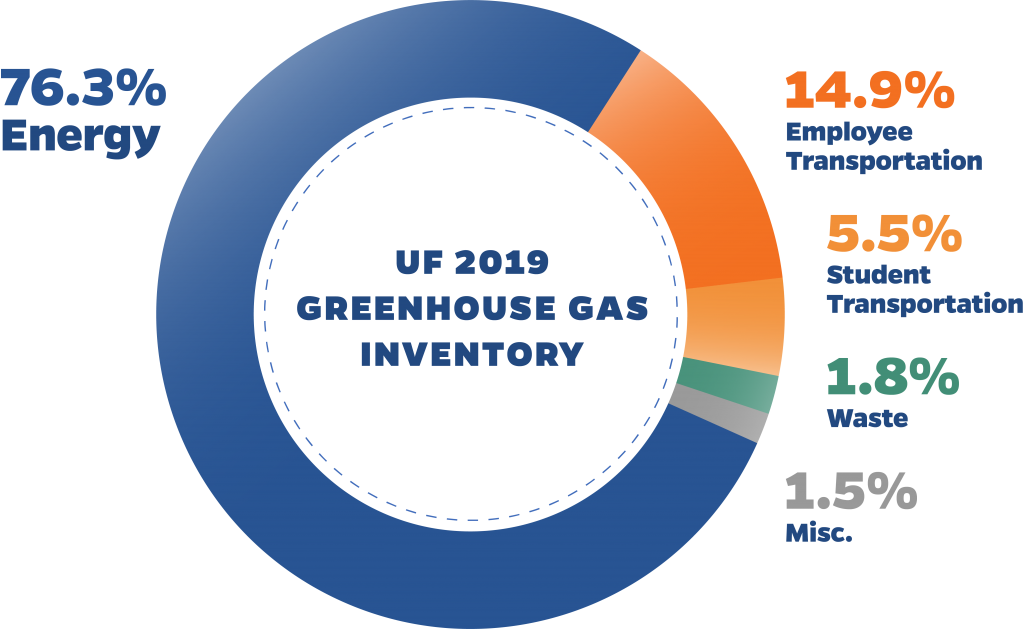uf greenhouse gas inventory
A Greenhouse Gas (GHG) Inventory is a comprehensive look at the major sources of GHG-related emissions created through an institution’s regular operations.
A Greenhouse Gas (GHG) Inventory is a comprehensive look at the major sources of GHG-related emissions created through an institution’s regular operations. Since the first endeavor to compile UF’s GHG Inventory in 2004, UF has worked to improve the tracking, reporting and calculations to create a more accurate picture of the university’s emissions.
What are Greenhouse Gasses?
Greenhouse gases are gases that trap heat in the atmosphere (EPA) including carbon dioxide, methane and nitrous oxide. These long-lived gases block heat from escaping the atmosphere, contributing to what scientists call the “greenhouse effect”(NASA).

Human activities, such as burning fossil fuels for electricity, heat and transportation, contribute to an increased abundance of greenhouse gases, leading to increased global warming. According to the Intergovernmental Panel on Climate Change (IPCC), human activities have caused approximately 1°C of global warming since pre-industrial times. This group of 1,300 independent scientific experts from around the world, have high confidence that at current rates, this would reach 1.5°C between 2030 and 2052 (IPCC).
The UF GHG Inventory
For fiscal year 2018-19, the university emitted 367,464 metric tons of net carbon dioxide equivalent (MTCO2e) greenhouse gas emissions. As outlined in the chart below, the 2019 UF GHG Inventory is made up of:
- 76.3% Energy-related emissions
- 14.9% Employee Transportation-related emissions
- 5.5% Student Transportation-related emissions
- 1.8% Waste-related emissions
- 1.5% Miscellaneous emissions

Within this inventory, these emissions fall under 3 different categories: Scope 1, Scope 2, and Scope 3.
Scope 1 (Direct Emissions):
Scope 1 emissions are associated with on-campus sources that are “owned or directly controlled” by the institution.
Scope 2 (Indirect Emissions):
Scope 2 emissions are associated with purchased utilities for campus, but that occur at sources owned or controlled by another entity.
Scope 3 (Indirect Emissions):
Scope 3 emissions come from sources that are not owned or controlled by the campus, but that are central to campus operations or activities.
How is UF’s Greenhouse Gas Inventory calculated?
The University of Florida’s greenhouse gas emissions are calculated for UF-owned main campus facilities using the widely-recognized Sustainability Indicator Management & Analysis Platform (SIMAP) tool developed by the University of New Hampshire (UNH). Use of the SIMAP tool, which is continuously updated, allows for efficient monitoring of UF’s emissions trend and comparison with other campuses.
GHG Inventory in Climate Action Planning
A Climate Action Plan (CAP) typically focuses on the reduction and mitigation of greenhouse gas emissions. In the UF Climate Action Plan revision process, the UF GHG Inventory can be used to:
- Better understand the major sources of emissions at UF
- Set a baseline for targets and goals for reducing emissions
- Inform and track progress on goals for reducing emissions
